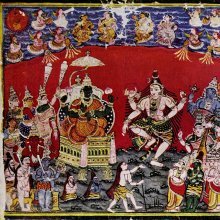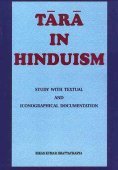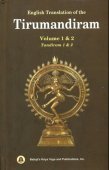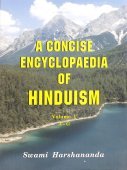Sandhya, Samdhya, Sandhyā, Shandhya: 22 definitions
Introduction:
Sandhya means something in Hinduism, Sanskrit, Jainism, Prakrit, the history of ancient India, Marathi, Hindi. If you want to know the exact meaning, history, etymology or English translation of this term then check out the descriptions on this page. Add your comment or reference to a book if you want to contribute to this summary article.
Images (photo gallery)
In Hinduism
Purana and Itihasa (epic history)
Source: Wisdom Library: PurāṇasSandhyā (सन्ध्या) refers to the morning, mid-day or evening prayer. It is used throughout vedic and purāṇic literature.
Source: Wisdom Library: Varāha-purāṇaSandhyā (सन्ध्या).—One of the seven major rivers situated in Krauñcadvīpa, according to the Varāhapurāṇa chapter 88. It is also known by the name Raudrā. Krauñcadvīpa is one of the seven islands (dvīpa), ruled over by Jyotiṣmān, one of the ten sons of Priyavrata, who is the son of Svāyambhuva Manu, who was created by Brahmā, who was in turn created by Nārāyaṇa, the unknowable all-pervasive primordial being.
The Varāhapurāṇa is categorised as a Mahāpurāṇa, and was originally composed of 24,000 metrical verses, possibly originating from before the 10th century. It is composed of two parts and Sūta is the main narrator.
Source: archive.org: Puranic Encyclopedia1) Sandhyā (सन्ध्या).—The previous birth of Arundhatī, wife of Vasiṣṭha. (For more details see under Vasiṣṭha Para 1, Sub-Section 1).
2) Sandhyā (सन्ध्या).—Mother of the giantess Sālakaṭaṅkā. It is stated in Uttara Rāmāyaṇa that this Sālakaṭaṅkā. the daughter of Sandhyā was married by the giant Vidyutkeśa.
3) Sandhyā (सन्ध्या).—Time of union or conjunction. There are three Sandhyās in a day. These are morning sandhyā (Prātaḥsandhyā), noon sandhyā (Madhyāhna sandhyā) and evening sandhyā (Sāyaṃ Sandhyā). The meeting time of night and day, is morning Sandhyā, the joining time of the first half and the second half of the day, is noon (Madhyāhna Sandhyā), and the joining time of day and night, is evening Sandhyā (Sāyaṃ sandhyā). Brahmins should keep the three Sandhyās properly. The morning sandhyā is of three kinds. Good, Medium and Bad. When the morning stars are seen and the sunrise is approaching it is good morning; when the stars are not seen and the sun is not risen it is medium sandhyā and the morning time after the sunrise is bad Sandhyā. In sāyaṃsandhyā also there is this difference of time, as good, medium and bad. The time till the sunset is good; the time after the sunset and before the rising of the stars is medium and the evening after the rising of the stars is bad. In the Vedas it is metaphorically mentioned that Brahmins are trees, and the three sandhyās are their roots, the Vedas, their branches and the rites and rituals ordained in the Vedas their leaves. From this it is clear that Brahmins should on no account leave unobserved, worships at these three sandhyās. The Brahmin who does not observe these three sandhyās carefully will, in his life time, become a śūdra and after the death, will be born again as a dog. Moreover the Brahmin who does not do the three evening, morning and noon worships, will have no right to conduct any other Vedic rites.
After the sun-rise and sun-set, within three nāzhikas (a nāzhika-24 minutes) the morning and evening worship should be finished. There is atonement ordered for morning and evening prayers conducted after the stipulated time. (Devī Bhāgavata, Skandha 11).
4) Sandhyā (सन्ध्या).—A holy river who worships Varuṇa in his assembly. (Sabhā Parva, Chapter 9, Verse 23).
5) Sandhyā (सन्ध्या).—The presiding Devatā of dusk. She is called Pratīcyādevī as well. (Udyoga Parva, Chapter 117, Verse 16).
Source: archive.org: Shiva Purana - English Translation1) Sandhyā (सन्ध्या) refers to a prayer uttered by Brahmins, according to the Śivapurāṇa 1.13, “Sandhyā prayer performed before the prescribed time is ineffective. Hence Sandhyā shall be performed at the prescribed time. The expiatory rite for the omission of Sandhyā prayer for a day is the repetition of Gāyatrī a hundred times more than the usual number of times for ten days. If the omission is for ten days or more, Gāyatrī must be repeated for a hundred thousand times as atonement. If one omits Sandhyā for a month one has to be re-invested with the sacred thread”.
2) Sandhyā (सन्ध्या) is the name of a daughter of Brahmā, according to the Śivapurāṇa 2.2.1.—“[...] Formerly, on seeing my daughter Sandhyā in the company of my sons I was afflicted by the arrows of the cupid and much upset. When remembered by Dharma, Rudra, the highest lord and the greatest yogin came there. He reproached me as well as my sons and went back to His abode. [...] Since she was born when Brahmā was deeply contemplating, the woman of lovely features will be famous as Sandhyā. She will be as lustrous as the jasmine flower”.
Sandhyā, lit. ‘twilight’, is personified as the daughter of Brahmā. It is said that Brahmā attempted to do violence to her but was reproached by Śiva. According to another version Sandhyā changed herself to a deer for escape from the evil intention of Brahmā whereupon Brahmā assumed the form of a stag and pursued her through the sky. Śiva saw this and shot an arrow which cut off the head of the stag. Brahmā then reassumed his own form and paid homage to Śiva.
Sandhyā is also known as Divakṣāntā, Sāyaṃsandhyā and Jayantikā, according to Chapter 2.2.2: “O sage, when I created Marīci, Atri, Pulaha, Pulastya, Aṅgiras, Kratu, Vasiṣṭha, Nārada, Dakṣa and Bhṛgu, my mental sons of lordly stature, a beautiful woman of handsome features was born of my mind. She was variously called Sandhyā, Divakṣāntā, Sāyaṃ Sandhyā and Jayantikā, She was very beautiful with finely-shaped eyebrows capable of captivating the minds of even sages. Neither in human world nor in that of the Devas was there such a woman of complete perfection in all qualities. Nor was there such a woman in nether worlds in all the three times (past, present and future)”.

The Purana (पुराण, purāṇas) refers to Sanskrit literature preserving ancient India’s vast cultural history, including historical legends, religious ceremonies, various arts and sciences. The eighteen mahapuranas total over 400,000 shlokas (metrical couplets) and date to at least several centuries BCE.
Vaishnavism (Vaishava dharma)
Source: Pure Bhakti: Arcana-dipika - 3rd Edition1) Sandhyā (सन्ध्या) refers to “one of three particular junctures in a day” (sunrise, midday or sunset).—(cf. Glossary page from Arcana-dīpikā).
2) Sandhyā (सन्ध्या) or Sandhyopāsanā refers to “chanting the dīkṣā-mantras given by the Guru”, according to the Arcana-dīpikā (manual on deity worship).—After performing ācamana, perform one’s morning sandhyā [also called āhnika, the chanting of the dīkṣāmantras given by the guru]. Two daṇḍas, or forty-eight minutes, before sunrise, until the sun is half-visible above the horizon, is the morning sandhyā, and the period from sunset until the stars appear in the sky is the evening sandhyā. Sandhyā is performed facing east in the morning and noon, and facing north in the evening.
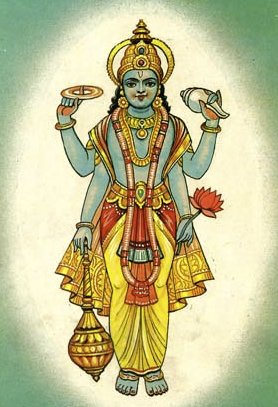
Vaishnava (वैष्णव, vaiṣṇava) or vaishnavism (vaiṣṇavism) represents a tradition of Hinduism worshipping Vishnu as the supreme Lord. Similar to the Shaktism and Shaivism traditions, Vaishnavism also developed as an individual movement, famous for its exposition of the dashavatara (‘ten avatars of Vishnu’).
Shaivism (Shaiva philosophy)
Source: Brill: Śaivism and the Tantric Traditions1) Sandhyā (सन्ध्या) refers to “twilight”, according to the Halāyudhastotra verse 34-35.—Accordingly, “The visitation of the wives of the distinguished sages in the Pine Park, the oblation with seed in Fire, the twilight dance (sandhyā-naṭana): Your behaviour is not reprehensible. O Three-eyed one! The doctrines of the world do not touch those who have left worldly life, having passed far beyond the path of those whose minds are afflicted by false knowledge. The gods all wear gold and jewels as an ornament on their body. You do not even wear gold the size of a berry on your ear or on your hand. The one whose natural beauty, surpassing the path [of the world], flashes on his own body, has no regard for the extraneous ornaments of ordinary men”.
2) Sandhya (सन्ध्य) refers to the “(three) junctures of the day”, according to the Mataṅgapārameśvara (with Rāmakaṇṭha’s commentary).—Accordingly, “Having worshipped the Lord, he should oblate into the fire at the three junctures of the day (tṛ-sandhya) a thousand pieces of Udumbara-wood smeared with the three [sweet substances]. Consuming [only] milk, he should make oblations [in this manner] for seven days. He will become one who has accomplished the vidyāvrata”.

Shaiva (शैव, śaiva) or Shaivism (śaivism) represents a tradition of Hinduism worshiping Shiva as the supreme being. Closely related to Shaktism, Shaiva literature includes a range of scriptures, including Tantras, while the root of this tradition may be traced back to the ancient Vedas.
Yoga (school of philosophy)
Source: ORA: Amanaska (king of all yogas): A Critical Edition and Annotated Translation by Jason BirchSandhya (सन्ध्य) refers to the “junctures of the day”, according to the Yogayājñavalkya, an ancient Sanskrit text from the 8th century dealing with the eight components of Yoga in over 500 verses.—Accordingly, [while describing a practice of breathing]: “Having drawn the breath in through the tongue [whose edges are curled up to form a tube], the man who constantly drinks [the breath this way] does not [suffer from] fatigue or [excessive] heat [in the body] and all [minor] diseases are cured. Having drawn in the breath at the junctures of the day (sandhya) or an hour before sunrise, he who drinks it [thus] for three months, good lady, [gains] eloquent speech and within six months of practice, he is freed from all serious diseases”.

Yoga is originally considered a branch of Hindu philosophy (astika), but both ancient and modern Yoga combine the physical, mental and spiritual. Yoga teaches various physical techniques also known as āsanas (postures), used for various purposes (eg., meditation, contemplation, relaxation).
Shaktism (Shakta philosophy)
Source: ORA: Amanaska (king of all yogas): (shaktism)Sandhyā (सन्ध्या) refers to the “rite of junctures”, according to the 17th century Kaulagajamardana (“crushing the Kaula elephant”) authored by Kāśīnātha or Kṛṣṇānandācala.—Accordingly, [as Īśvara said to Pārvatī]: “Listen, O Pārvatī, I shall give a critique of the Pāṣaṇḍas. Knowing this, a wise man is not defeated by them. [...] He who wears ash from the cremation ground and delights in wine and flesh; he who performs such [rites] as bathing and the junctures (sandhyā) for [mere] worldly rewards [snānasandhyādiṃ devi laukikārthaṃ ca yaś caret]; and he who is the vilest [of them all,] having become a hater of Viṣṇu, destroys everything; [all of them] are called Pāṣaṇḍas. [Now,] my dear, hear about the Kāpālika. [...]”

Shakta (शाक्त, śākta) or Shaktism (śāktism) represents a tradition of Hinduism where the Goddess (Devi) is revered and worshipped. Shakta literature includes a range of scriptures, including various Agamas and Tantras, although its roots may be traced back to the Vedas.
Ayurveda (science of life)
Toxicology (Study and Treatment of poison)
Source: Shodhganga: Kasyapa Samhita—Text on Visha ChikitsaSandhya (सन्ध्य) refers to “twilight”, as taught in the Kāśyapa Saṃhitā: an ancient Sanskrit text from the Pāñcarātra tradition dealing with both Tantra and Viṣacikitsā—an important topic from Āyurveda which deals with the study of Toxicology (Agadatantra or Sarpavidyā).—The Kāśyapasaṃhitā mentions that snake-bites that happen in certain places [like twilight (both) (dvi-sandhya)] [?] are highly inimical to the victim.

Āyurveda (आयुर्वेद, ayurveda) is a branch of Indian science dealing with medicine, herbalism, taxology, anatomy, surgery, alchemy and related topics. Traditional practice of Āyurveda in ancient India dates back to at least the first millenium BC. Literature is commonly written in Sanskrit using various poetic metres.
In Jainism
General definition (in Jainism)
Source: archive.org: TrisastisalakapurusacaritraSandhyā (सन्ध्या) is the mother of Vidyutprabhā, according to the Jain Ramayana and chapter 7.1 [origin of the rākṣasavaṃśa and vānaravaṃśa] of Hemacandra’s 11th century Triṣaṣṭiśalākāpuruṣacaritra: an ancient Sanskrit epic poem narrating the history and legends of sixty-three illustrious persons in Jainism.
Accordingly, “One day Rāvaṇa went for amusement to the mountain Megharava which has wings, as it were, with layers of Clouds clinging to its sides. He saw six thousand Khecara-maidens bathing in a pool there like Apsarases in the Ocean of Milk. Desiring a husband, they looked at him with affection, their lotus-eyes wide-open, like day-blooming lotuses looking at the sun. Casting aside modesty at once, afflicted by strong love, they themselves asked him, ‘Be our husband.’ Among these was [e.g., Vidyutprabhā, daughter of Kanaka and Sandhyā, ...]”.

Jainism is an Indian religion of Dharma whose doctrine revolves around harmlessness (ahimsa) towards every living being. The two major branches (Digambara and Svetambara) of Jainism stimulate self-control (or, shramana, ‘self-reliance’) and spiritual development through a path of peace for the soul to progess to the ultimate goal.
India history and geography
Source: archive.org: Nilamata Purana: a cultural and literary study (history)Sandhyā (सन्ध्या) is the name of a river mentioned in the Nīlamatapurāṇa.—The spring of Sandhyā now known as Sundabrar is situated in a side valley opening to the south of the village of Devalgom circa 75° 22' long. 33° 32' lat.
Source: Cologne Digital Sanskrit Dictionaries: Indian Epigraphical GlossarySandhyā.—(CITD), the morning, noon and evening prayers of a Brāhmaṇa. (CII 3; IA 17), a period at the commencement of each of the four Hindu ages; the sandhyā of the Kali-yuga lasts for 36,000 years of men, and is still running; cf. sandhyāṃśa. Note: sandhyā is defined in the “Indian epigraphical glossary” as it can be found on ancient inscriptions commonly written in Sanskrit, Prakrit or Dravidian languages.

The history of India traces the identification of countries, villages, towns and other regions of India, as well as mythology, zoology, royal dynasties, rulers, tribes, local festivities and traditions and regional languages. Ancient India enjoyed religious freedom and encourages the path of Dharma, a concept common to Buddhism, Hinduism, and Jainism.
Languages of India and abroad
Marathi-English dictionary
Source: DDSA: The Molesworth Marathi and English Dictionarysandhyā (संध्या).—f (S) The period of evening twilight. 2 Religious meditation, repetition of mantras, sipping of water &c., to be performed by the three first classes of Hindus at particular periods in the day, especially at sunrise, sunset, and noon. 3 The period intervening between one Yuga or age and another. 4 Twilight (whether of the morning or evening). 5 An intervening period,--the forenoon, the afternoon, or midday.
--- OR ---
sāndhya (सांध्य).—a S Relating to the evening, vespertine.
Source: DDSA: The Aryabhusan school dictionary, Marathi-Englishsandhyā (संध्या).—f Evening. Religious repetition of mantra at sunrise, sunset, and noon.
--- OR ---
sāndhya (सांध्य).—a Relating to the evening.
Marathi is an Indo-European language having over 70 million native speakers people in (predominantly) Maharashtra India. Marathi, like many other Indo-Aryan languages, evolved from early forms of Prakrit, which itself is a subset of Sanskrit, one of the most ancient languages of the world.
Sanskrit dictionary
Source: Cologne Digital Sanskrit Dictionaries: Shabda-Sagara Sanskrit-English DictionarySandhyā (सन्ध्या).—f.
(-ndhyā) 1. Twilight, either morning or evening. 2. The period that elapses between the expiration of one Yuga or age, and the commencement of another. 3. A period of time, forenoon, after moon or mid-day. 4. Religious abstraction, meditation, repetition of Mantras, sipping water, &c., to be performed by the three first classes of Hindus, at stated periods in the course of every day, especially at sunrise, sunset, and at noon. 5. Reflection. 6. Promise, assent. 7. Boundary, limit. 8. Joining, union. 9. A flower; according to some the tuberose, to others, the jasmine. 10. Twilight, personified as the daughter of Brahma, and wife of Siva. 11. The name of a river. E. sandhi a joint, (of the day,) and yat aff.; or sam + dhyai-aṅ sandhau bhavaḥ yat vā .
--- OR ---
Sāndhya (सान्ध्य).—mfn.
(-ndhyaḥ-ndhyī-ndhyaṃ) Produced at or relating to the evening, &c. E. sandhyā twilight, aṇ aff.
Source: Cologne Digital Sanskrit Dictionaries: Benfey Sanskrit-English DictionarySāndhya (सान्ध्य).—i. e. saṃdhyā + a, adj. Relating to twilight or the evening, [Kirātārjunīya] 5, 8; [Śiśupālavadha] 9, 15.
Source: Cologne Digital Sanskrit Dictionaries: Monier-Williams Sanskrit-English DictionaryṢāṇḍhya (षाण्ढ्य):—n. ([from] ṣaṇḍha) the state of being a eunuch, impotence, [Caraka] (printed śāṭhya).
Source: Cologne Digital Sanskrit Dictionaries: Yates Sanskrit-English Dictionary1) Sandhyā (सन्ध्या):—(ndhyā) 1. f. Joining; boundary; a division or period of time; twilight; agreement, promise; mental combination, reflection; name of a river and of a flower.
2) Sāndhya (सान्ध्य):—[(ndhyaḥ-ndhyā-ndhyaṃ) a.] Produced at or relating to the evening.
Source: DDSA: Paia-sadda-mahannavo; a comprehensive Prakrit Hindi dictionary (S)Sandhyā (सन्ध्या) in the Sanskrit language is related to the Prakrit word: Saṃjhā.
[Sanskrit to German]
Sanskrit, also spelled संस्कृतम् (saṃskṛtam), is an ancient language of India commonly seen as the grandmother of the Indo-European language family (even English!). Closely allied with Prakrit and Pali, Sanskrit is more exhaustive in both grammar and terms and has the most extensive collection of literature in the world, greatly surpassing its sister-languages Greek and Latin.
Hindi dictionary
Source: DDSA: A practical Hindi-English dictionarySandhya in Hindi refers in English to:—(nf) evening, twilight; select Vedic hymns recited in the morning or evening prayers; —[kala] evening (time); ~[kalina] pertaining to the evening; ~[loka] twilight; —[vamdana] (evening) prayers..—sandhya (संध्या) is alternatively transliterated as Saṃdhyā.
...
Kannada-English dictionary
Source: Alar: Kannada-English corpusSāṃdhya (ಸಾಂಧ್ಯ):—[adjective] relating to evening or the period of time about the sunset.
Kannada is a Dravidian language (as opposed to the Indo-European language family) mainly spoken in the southwestern region of India.
See also (Relevant definitions)
Starts with (+34): Samdhyabha, Samdhyabhasha, Samdhyabhivamdana, Samdhyakshara, Samdhyamegha, Samdhyameghaugha, Samdhyana, Samdhyaraga, Samdhyaruci, Samdhyaruna, Samdhyarunita, Samdhyatama, Samdhyatapana, Samdhyatraya, Samdhyavamdane, Samdhyopasti, Sandhya-goshthi, Sandhya-kusuma, Sandhya-lalima, Sandhya-malati.
Ends with: Agrasandhya, Anusamdhya, Atisandhya, Aupasamdhya, Dvisandhya, Mahasandhya, Praksandhya, Pratahsandhya, Purvasandhya, Purvvasandhya, Sayamsandhya, Snanasandhya, Trisandhya, Yogasandhya.
Full-text (+187): Sandhya-lalima, Agrasandhya, Sandhya-goshthi, Purvasandhya, Samdhya, Sandhyaraga, Trisandhya, Sandhyanatin, Praksandhya, Sandhyabala, Sandhyakala, Sandhyatraya, Pratahsandhya, Sandhyabhra, Sandhyasamaya, Sandhyarama, Sanjha, Balasandhyabha, Samdhyabhojana, Sandhyabali.
Relevant text
Search found 103 books and stories containing Sandhya, Samdhya, Sāṃdhya, Sandhyā, Sāndhya, Ṣāṇḍhya, Sandhyaa, Shandhya; (plurals include: Sandhyas, Samdhyas, Sāṃdhyas, Sandhyās, Sāndhyas, Ṣāṇḍhyas, Sandhyaas, Shandhyas). You can also click to the full overview containing English textual excerpts. Below are direct links for the most relevant articles:
The Devi Bhagavata Purana (by Swami Vijñanananda)
Chapter 19 - On the midday Sandhyā < [Book 11]
Chapter 20 - On the description of Brahmā Yajñā, Sandhyās, etc. < [Book 11]
Chapter 16 - On the description of Sandhyā Upāsānā < [Book 11]
The Linga Purana (by J. L. Shastri)
Chapter 4 - Inauguration of Creation (sṛṣṭi-prāraṃbha) < [Section 1 - Uttarabhāga]
Chapter 73 - Glory of worshipping Śiva < [Section 1 - Uttarabhāga]
Chapter 39 - Specific Dharmas of Four Yugas < [Section 1 - Uttarabhāga]
The Garuda Purana (by Manmatha Nath Dutt)
Chapter XXXVI - Mode of performing, the rite of Gayatri Nyasa < [Agastya Samhita]
Chapter CCXXIX - Duties of Brahmanas, etc. < [Dhanvantari Samhita]
Chapter L - Discourses on charities and gift-makings, etc. < [Agastya Samhita]
Gobhila-grihya-sutra (by Hermann Oldenberg)
Garga Samhita (English) (by Danavir Goswami)
Verse 4.16.4 < [Chapter 16 - The Srī Yamunā Armor]
Verse 4.19.103 < [Chapter 19 - A Thousand Names of Srī Yamunā]
Verse 4.18.15 < [Chapter 18 - The Names and Worship of Srī Yamunā]
The Brahmanda Purana (by G.V. Tagare)
Chapter 29 - Cycle of Yugas: characteristics of Yugas < [Section 2 - Anuṣaṅga-pāda]
Chapter 31 - Narration of the four Yugas: castes and stages of life < [Section 2 - Anuṣaṅga-pāda]
Chapter 30 - The inauguration of the sacrificial cult < [Section 2 - Anuṣaṅga-pāda]
Related products

